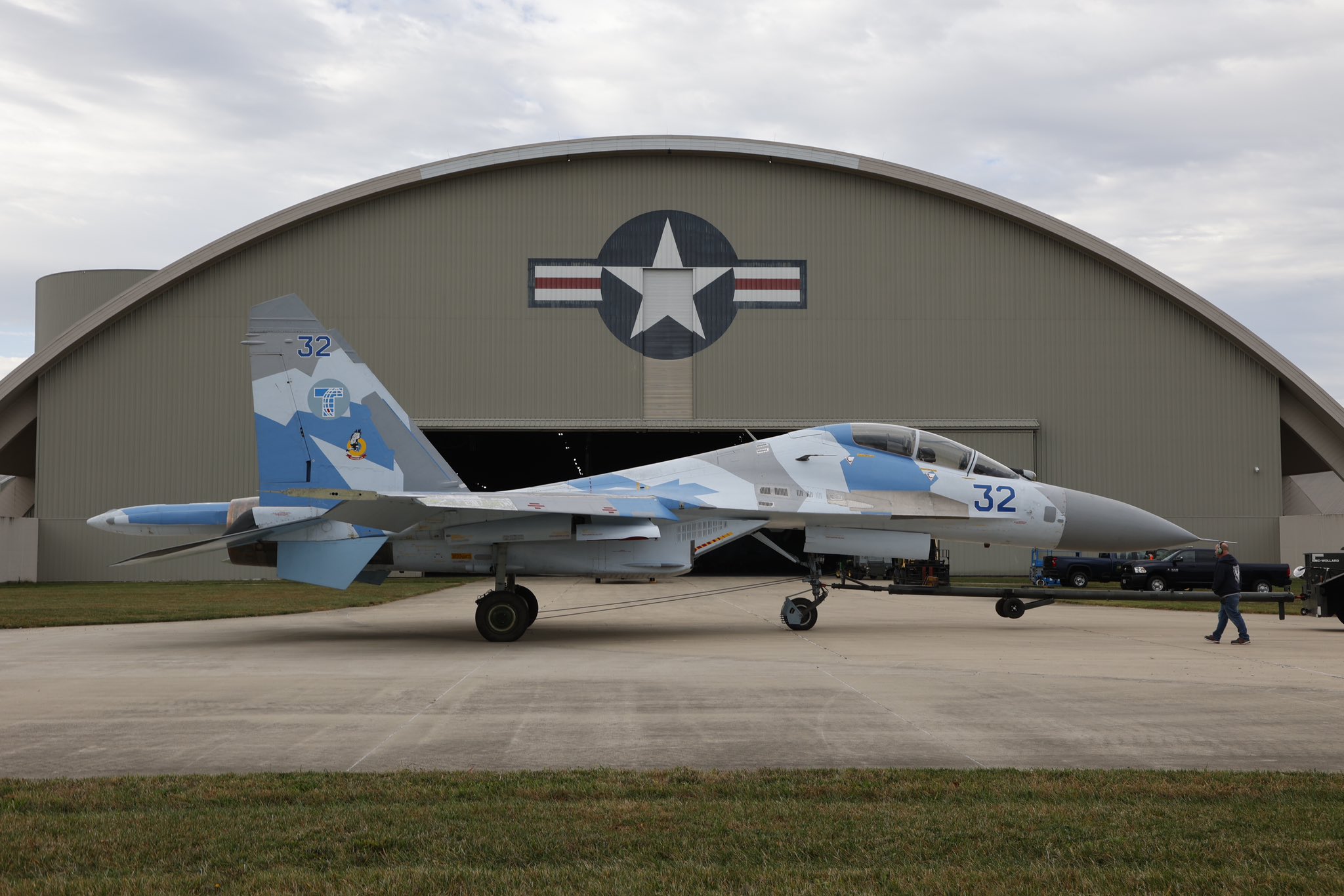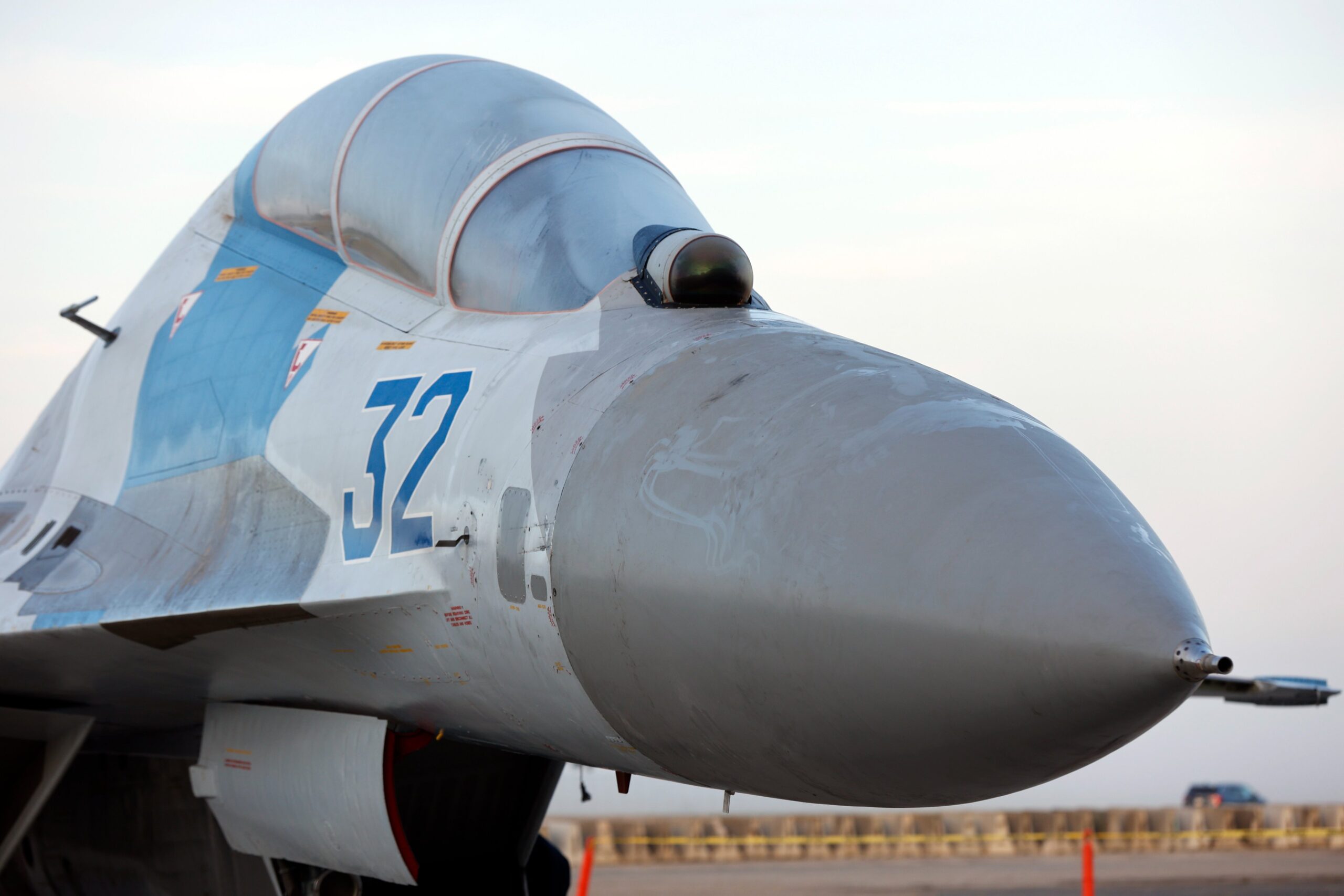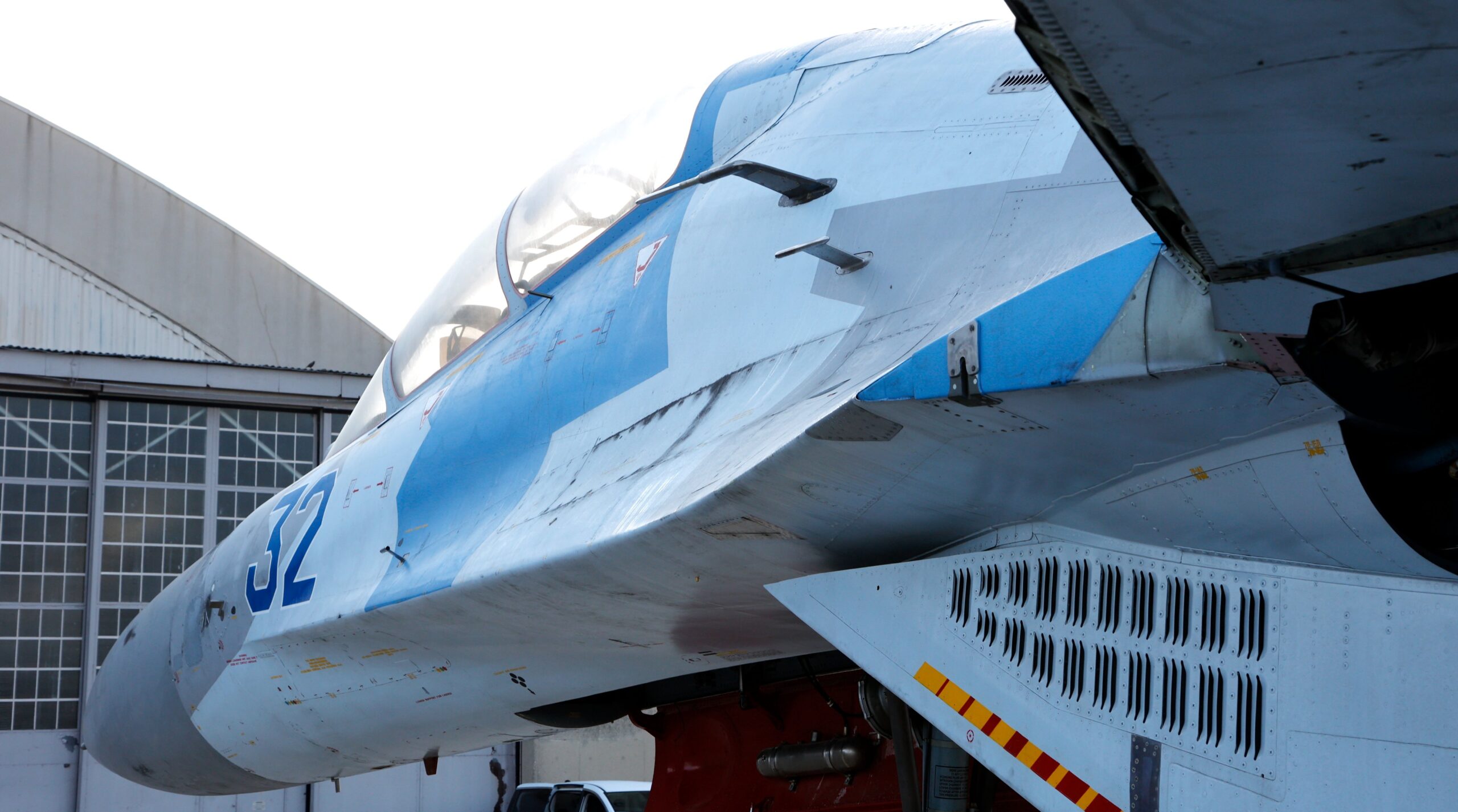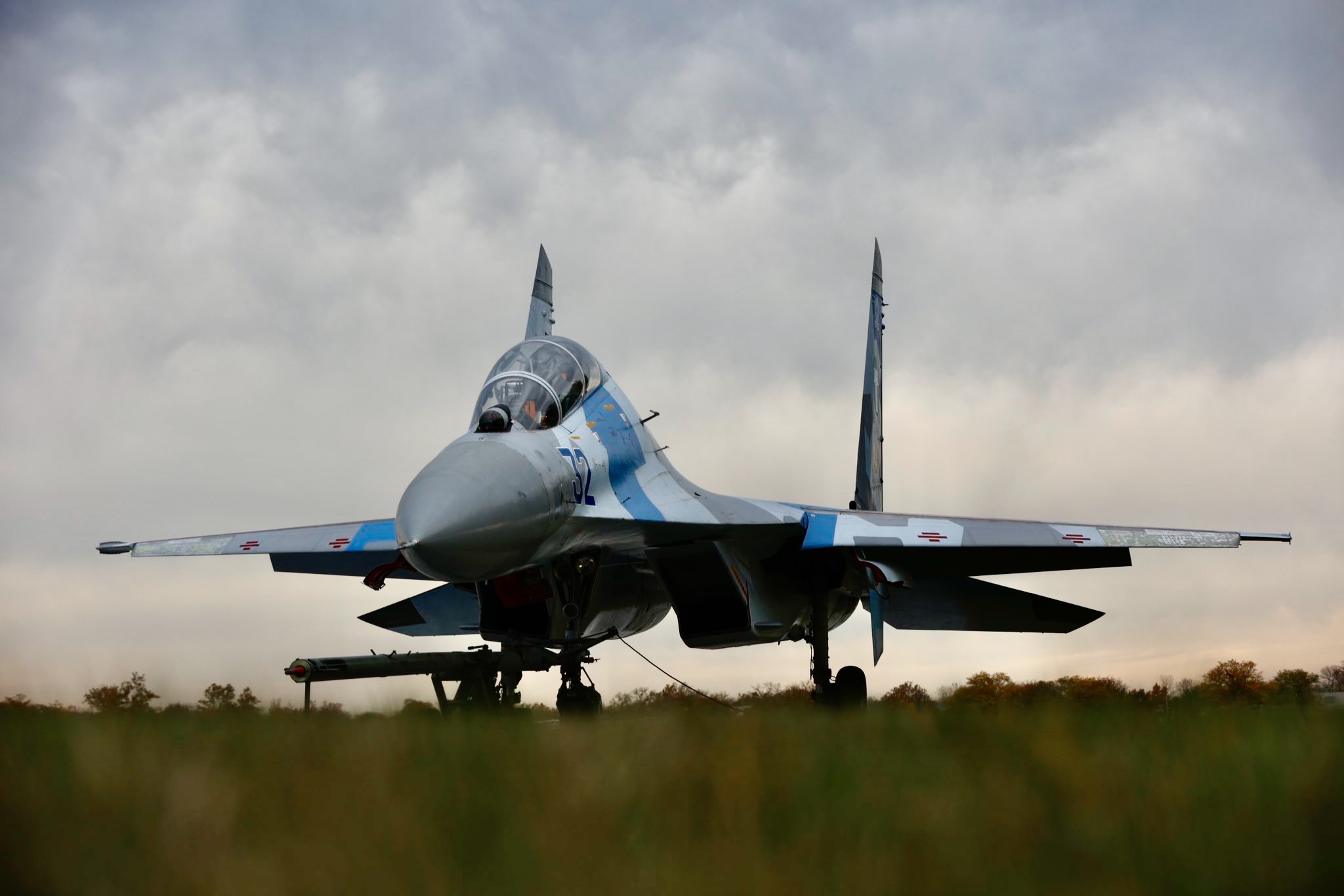The Soviet-designed Sukhoi Su-27 Flanker is truly a beast of a fighter. Oftentimes, it’s only when these jets are lined up next to other aircraft on the ground that a true sense of the type’s scale can be properly appreciated. Now, the National Museum of the U.S. Air Force in Dayton, Ohio, has released a picture of the Su-27 it recently acquired — an aircraft which is steeped in mystery that you can read about here — that does just this.
The image above was released on October 25, and shows the two-seat Su-27UB Flanker-C sitting in the museum’s Cold War Gallery. Ever since the museum acquired the Su-27 in September, plans have been in place for it to eventually join the various other aircraft in the Gallery this fall.
What’s immediately striking about the image is just how enormous the Flanker looks compared to many of the other types surrounding it. For an understanding of its size in broad terms, the Su-27 is roughly 72 feet in length, measures nearly 21 feet high, and has a wingspan of some 48 feet. To the Flanker’s immediate right, we see an early model Soviet Air Force Mikoyan MiG-29A that is absolutely dwarfed by the big Su-27. The MiG-29 measures some 57 feet long and nearly 16 feet high, with a wingspan of just over 37 feet.

Other aircraft in the image, clockwise from the MiG-29, include an RF-4 Phantom II, a MiG-23 Flogger, an F-111 Aardvark, and an RAF Tornado. To the rear, a C-133 Cargomaster can also be seen. Even the big swing-wing F-111 looks svelte next to the Su-27. And yes, distance of the subject to the camera plays a part here, but not that big of a part.
Overall, the lineup certainly makes for an interesting array of types grouped together, particularly Soviet types, each with their own interesting back-stories.
The museum also released imagery and video of the Su-27 on the move to its new home within the Cold War Gallery yesterday, which can be seen below.

Alongside it, several other aircraft have been added to the Gallery this week — including an HH-60G Pave Hawk helicopter, an A-10A Thunderbolt II, and the McDonnell Douglas F-15C Eagle — a double MiG killer.

Comparing the drone video of the Flanker below, which shows its condition in clear detail, with images of it captured when it first arrived at the museum last month, make it clear that a good amount of work has been spent polishing it up for public display.



When the museum announced it had purchased the Su-27 late last month, it certainly caused something of a stir amongst aviation enthusiasts, as The War Zone reported at the time. The aircraft’s distinct camouflage scheme and Soviet-style ‘bort’ number of the nose — Blue 32 — were quickly linked to an Su-27 which had been on the U.S. civil register as N132SU. That aircraft was first registered with the Federal Aviation Administration (FAA) in 2009 and, along with another Su-27UB, N131SU, was purchased on the open market from Ukraine and put up for sale by Pride Aircraft, Inc.
While it was claimed by the company that the two Flankers had been sold by the spring of 2011, from there their whereabouts was a mystery. They quite literally disappeared into the black. Between this time and N132SU’s sale to the National Museum of the U.S. Air Force in September, it was widely believed that the Flanker found its way into the highly classified world of Foreign Material Exploitation, or FME, quite likely out of the Air Force’s Groom Lake test facility, more commonly known as Area 51. The precise reason why N132SU recently emerged from the shadows is also something of a mystery; it’s entirely possible that the military’s needs for the aircraft were met, or that any programs associated with it were shut down. The location of N131SU remains unclear.

Whatever the reason for its reappearance after all this time, the Su-27 certainly strikes an imposing figure, which you can now check out for yourself by visiting arguably the world’s best combat aircraft museum.
Thomas Newdick contributed to this article.
Contact the author: oliver@thewarzone.com
